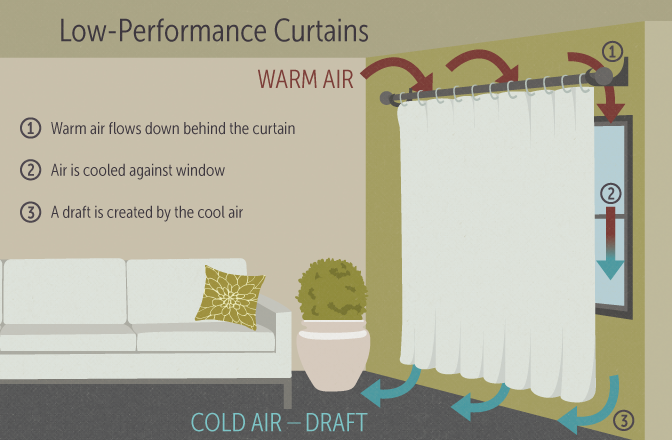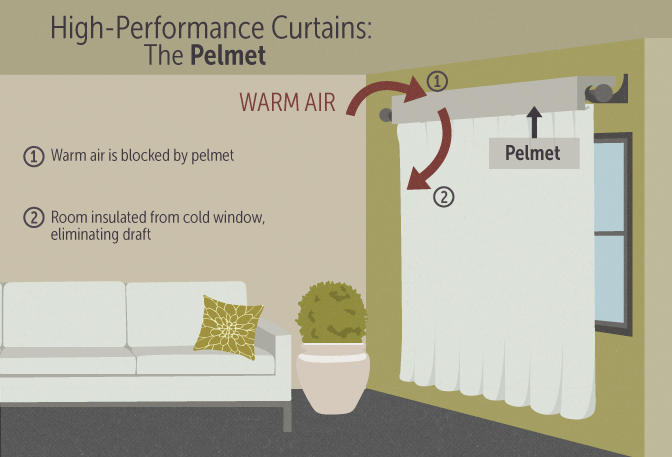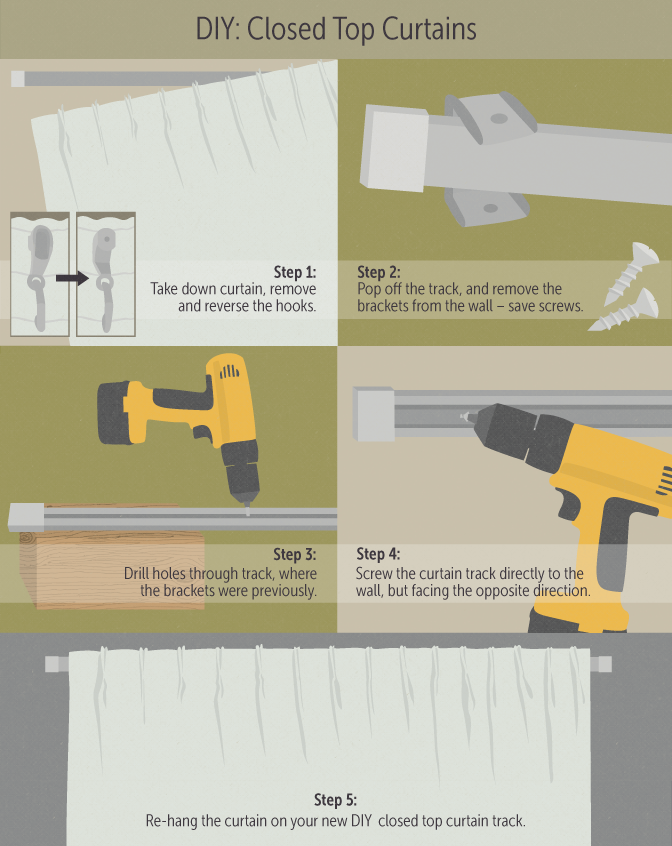Curtains for Efficiency
How to Fix Your Drafty Windows
Windows are great for natural day lighting and views, but during long winter nights they become holes in the sides of our homes, emitting heat to the universe. Curtains are basically insulation for windows, but the vast majority of curtains do not perform as well as they should in terms of holding warmth within a building. I’ll cover the basic physics of energy flow pertaining to curtains, and then provide some rules to increase the performance of your curtains.
What‘s Wrong Window?
Single-glazing? Double-glazing? Storm windows? Any way you slice it, windows are the weak link in the thermal envelope of our homes. In many cases, even an un-insulated wall has a higher insulating capacity (R-value) than double-glazed windows.
Unlike the metric system, which has global application, there is no international standard for R-values. In order to make this piece relevant to readers worldwide, I will describe thermal performance in relative terms rather than specific units.
For example, an un-insulated wall can be 400% better at retaining heat than a single-glazed window or 50% to 100% better than double-glazing (depending on the type of material making up the window frame and whether it is ‘thermally broken’ or not). When comparing the heat retention ability of windows to fully insulated walls, there’s obviously no comparison.
The takeaway message: no matter how beautiful the windows, heat will escape. Windows should have a properly fitted, insulating fabric covering. The problem is that most curtains are not properly fitted to maximize their insulating capacity, and most people don’t know it.
The Problem
The most common type of curtain track consists of brackets that hold a rail four to five centimeters (1.5 inches) from the wall. I will refer to this style as an “open-top” curtain track because of the long narrow gap between the top of the curtain and the wall. While most brackets that come with open-top curtain tracks can be adjusted to narrow or widen the gap, any gap at all at the top or bottom of a curtain diminishes its thermal performance.

The illustration above shows a typical open-top, free-hanging curtain. During cold nights when the curtains are closed, the warm air between the fabric and the window cools as heat radiates through the glazing. As sure as warm air rises, cool air sinks. In this case, the air between the curtain and the window falls to the floor creating negative pressure (a vacuum), which pulls air from the ceiling through the gap at the top of the curtain.
As would be expected, the air along the ceiling is the warmest in a home, and this process pulls it against the coldest surface over and over again. This diabolical version of a convection-current-in-reverse proceeds from sunset to sunrise as long as the air temperature inside the home is higher than it is outside. Winter nights can last 15 or more hours, depending on your latitude. That is long enough to lose a considerable amount of heat from what otherwise may be a well-insulated home.
The Solution
Now that you understand the physics behind the problem with open-top curtain tracks, the strategies for addressing the problem should appear logical. The first and best way to slow the flow of warm air from the ceiling behind a curtain is to install a pelmet: a cornice or valance that conceals the top of a curtain rail. A pelmet can either come down from the ceiling to cover the top of a curtain, or it can be attached to the wall immediately above a window. The latter is often called a “box pelmet” and should have closed sides as the name implies. Either type of pelmet should cover the top of the curtain by about two inches.

The second way to slow the unimpeded movement of air behind a curtain from top to bottom is to replace a free-hanging curtain with one that is floor-length. Where a pelmet blocks the top of a curtain, floor-length fabric acts to slow the free movement of air out of the bottom.
Some people may choose not to embrace either of these strategies because of their budget or aesthetics. Fortunately, there are other low-cost options that are nearly as effective.
The DIY Option
An off-the-shelf alternative to the common open-top curtain track is a closed-top curtain track called a “face-fix,” because it is fixed with screws directly to the face of a wall or window frame. Replacing the open-top curtain tracks in your home with a face-fix could be a cheaper option than installing pelmets or floor-length curtains. This option would not significantly change the look or style of your curtains – but it will close the gap at the top.
An even cheaper DIY approach to close off the top of a curtain is shown step-by-step in the illustration below. First, take down the curtain and lay it across a bed or sofa, since you’ll need to take out the hooks and reverse them. Next, pop out the curtain track and remove the brackets from the wall. Save the screws for later.
With the curtain track laid on blocks on the floor, drill a series of holes at the same intervals at which the brackets were hung. Then use the same screws to fix the curtain track directly to the wall, but 180 degrees from its former orientation on the bracket. As mentioned above, reverse the curtain hooks, and re-hang the curtain on what now is a budget, DIY face-fix track.

While this last method offers a low-cost option, a drawback for some people may be that the slot is visible in the reversed track.
Also Important
Once you have limited the airflow around your curtains, the next crucial factor is to have a minimum of two layers of fabric. Insulation is all about trapped pockets of air: the more layers, the more trapped air – just as we dress in layers on cold days. You can add a fabric called bumph between the curtain and the lining to make a super high-performance insulation system for windows. Research has shown that tight-fitting thermal curtains result in an R-value equal to or greater than double-glazing, but at a fraction of the cost. For more DIY tips on retaining heat in your home, check out our article on weatherization.
Embed the article on your site

